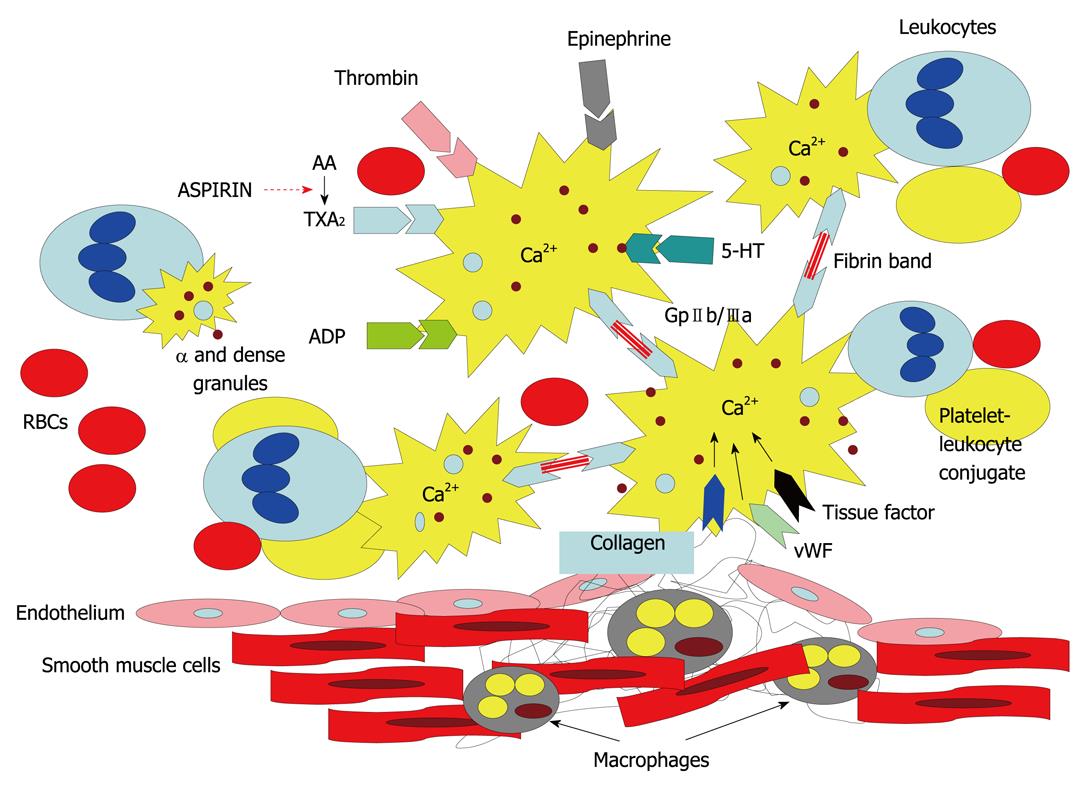Copyright
©2010 Baishideng Publishing Group Co.
World J Cardiol. Sep 26, 2010; 2(9): 280-288
Published online Sep 26, 2010. doi: 10.4330/wjc.v2.i9.280
Published online Sep 26, 2010. doi: 10.4330/wjc.v2.i9.280
Figure 1 Pathways of platelet aggregation.
Platelets can be activated in response to collagen, von Willebrand factor (vWF) and tissue factor when there is injury to the endothelial lining. A host of other stimuli, such as adenosine diphosphate (ADP), 5-hydroxytryptamine (5-HT), epinephrine and thromboxane A2 (TXA2), can initiate aggregation via specific receptors. The end-point is the rise in cytosolic Ca2+ which induces platelet activation/aggregation. Externalization of glycoprotein (Gp)IIb/IIIa receptors causes fibrin bands to bind to different platelets. Aspirin interferes with the conversion of arachidonic acid (AA) to TXA2 and inhibits the rise in cytosolic Ca2+ and subsequent platelet aggregation.
- Citation: Mehta JL, Mohandas B. Aspirin resistance: Fact or fiction? A point of view. World J Cardiol 2010; 2(9): 280-288
- URL: https://www.wjgnet.com/1949-8462/full/v2/i9/280.htm
- DOI: https://dx.doi.org/10.4330/wjc.v2.i9.280









